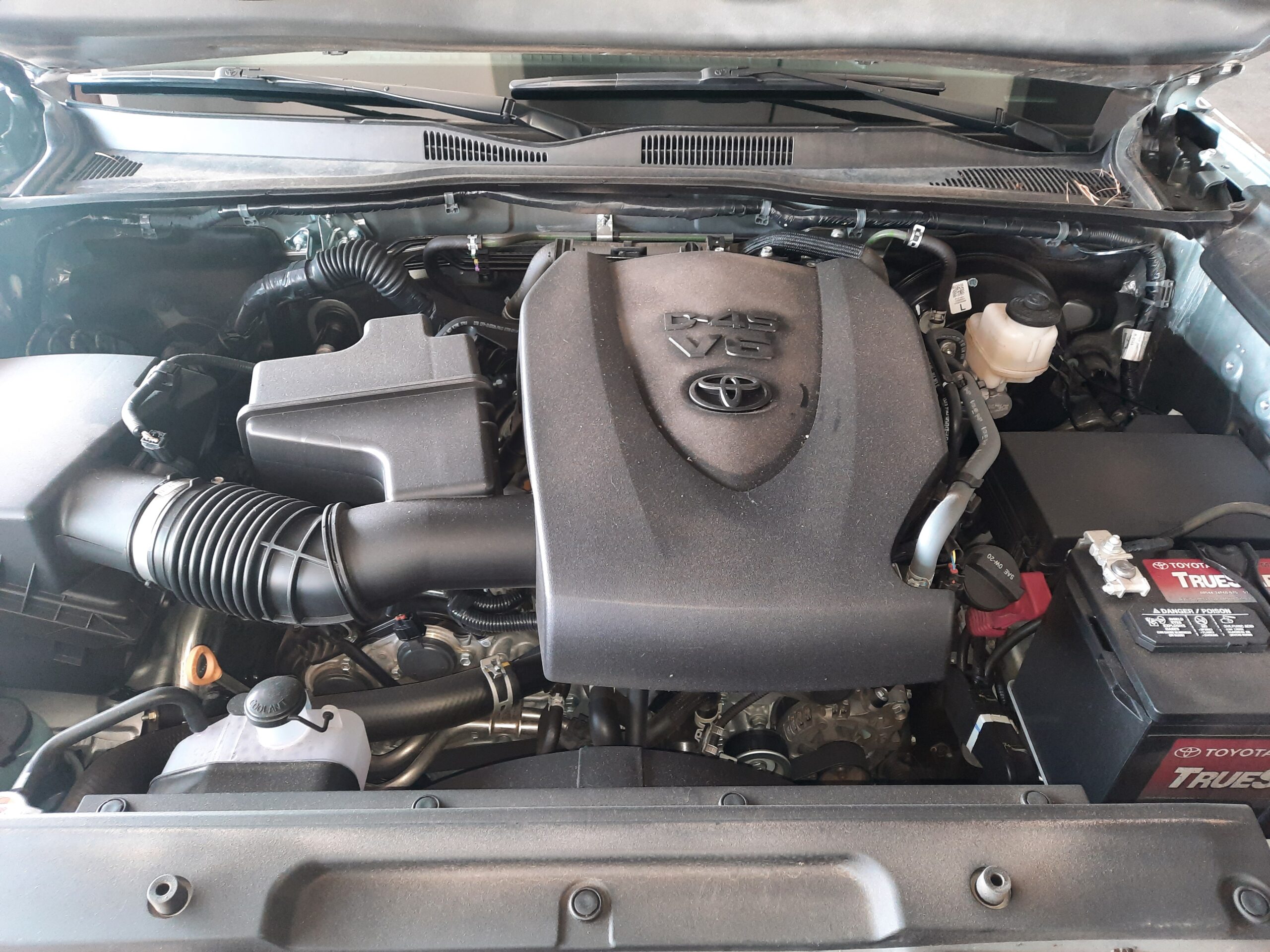Toyota Tacoma V6 Gas Mileage (All Model Years)
The beloved V6 Tacoma has a powertrain that is well-balanced in terms of fuel efficiency and performance.

Key Points:
- V6 Tacoma combined MPGs range from 18 to 21 depending on model year.
- Various factors can influence your real-world gas mileage.
- The V6 was phased out in 2024 with a fuel-efficient and powerful 4-cylinder turbo engine.
The tough and adaptable V6-powered Toyota Tacoma is an excellent vehicle choice. If you plan to make a purchase, it’s important to understand the gas mileage, whether you’re going on off-road adventures or are just looking for a dependable car to get around with.
This post will focus on the Toyota Tacoma V6’s gas mileage data for all model years. We have you covered for everything from official mpg ratings to practical factors affecting fuel efficiency.
Official MPG Ratings
First, let’s get into the numbers. We’ve compiled a comparison of 6-cylinder Tacomas for all model years that are compatible with the V6 engine, including the mpg for highway, city, and combined.
Keep in mind there’s a 1-2 mpg variation between V6 configurations due to 4WD vs. 2WD and other factors.
| Model Year | Combined MPG (up to) | City MPG (up to) | Highway MPG (up to) |
|---|---|---|---|
| 2023 | 21 | 19 | 24 |
| 2022 | 21 | 19 | 24 |
| 2021 | 21 | 19 | 24 |
| 2020 | 21 | 19 | 24 |
| 2019 | 21 | 19 | 24 |
| 2018 | 21 | 19 | 24 |
| 2017 | 21 | 19 | 24 |
| 2016 | 21 | 19 | 24 |
| 2015 | 19 | 17 | 21 |
| 2014 | 19 | 17 | 21 |
| 2013 | 19 | 17 | 21 |
| 2012 | 19 | 17 | 21 |
| 2011 | 18 | 17 | 21 |
| 2010 | 18 | 17 | 21 |
| 2009 | 18 | 17 | 21 |
| 2008 | 18 | 16 | 20 |
| 2007 | 18 | 17 | 21 |
| 2006 | 18 | 16 | 21 |
| 2005 | 18 | 16 | 21 |
| 2004 | 19 | 17 | 22 |
| 2003 | 19 | 17 | 22 |
| 2002 | 18 | 16 | 21 |
| 2001 | 18 | 16 | 20 |
| 2000 | 19 | 17 | 22 |
| 1999 | 19 | 17 | 22 |
| 1998 | 19 | 17 | 22 |
| 1997 | 18 | 17 | 21 |
| 1996 | 18 | 17 | 21 |
| 1995 | 19 | 17 | 21 |
Comparison Between the V6 and 4-Cylinder MPG
A 4-cylinder engine is generally more fuel efficient due to having less horsepower and being smaller in size, which reduces the weight of the vehicle.
V6 engines, on the other hand, tend to consume more fuel since there’s more volume flowing into the car engine cylinders.
Take the 2023 Tacoma as an example: both the 4-cylinder and 6-cylinder models can get up to 21 mpg combined, but the 4-cylinder can get 20 mpg in the city compared to 19 mpg on the 6-cylinder.
(Capital One, cascadecollision.com)
Factors That Affect Real-World Gas Mileage

Many people rely on the official EPA fuel economy ratings for guidance, but these numbers may differ from what you experience in real life. There are plenty of factors that can affect your outcome, including:
How and Where You Drive
The EPA combined figure is calculated with the assumption that most people drive 55% of the time in the city and 45% on the highway. If you live in an urban city, you probably spend a lot of time in traffic congestion. As a result, most of your driving should be calculated as city use.
Highway mpg figures also assume you’re going 50mph or higher. If you tend to drive slower, it’s considered city driving, even if you’re on the highway. If you frequently stop and go, you can reduce the EPA combined rating by as much as 27%.
It was also found that ‘calm’ drivers, who avoid speeding and unnecessary lane changes, can improve their fuel economy by up to 35%.
If you drive in 4WD constantly, you can lower your fuel efficiency since engaging all four wheels makes the engine work harder.
Weather Conditions
Weather conditions can also affect your fuel efficiency. For example, hot weather and mountainous regions affect mpg because using air conditioning and other electrical accessories can decrease efficiency.
Similarly, cold weather and frequent short trips reduce mpg since the engine doesn’t operate until it’s warmed up.
Vehicle Condition and Maintenance
The condition of your vehicle and how you take care of it matters in terms of mpg. For example, if you have low tire pressure or improperly aligned tires, your car will need to work harder on the road.
Towing a trailer with a poorly tuned engine can also lower fuel economy.
Vehicle Variations
All vehicles are different, and bigger cars usually have lower mpg. Engine size can also affect fuel economy, along with aftermarket modifications and additions like cargo racks. By default, different trims and models have varying mpg estimates.
It’s worth noting that newer vehicles don’t have optimal fuel economy right away. This only happens after the engine has broken in at 3,000-5,000 miles.
The EPA also doesn’t test every new vehicle for fuel efficiency. The amount of vehicles that are randomly tested only account for about 10%. Instead of real data, these estimates are usually based on the automaker’s provided estimates.
(fueleconomy.gov, Edmunds, Motor Biscuit)
Frequently Asked Questions
Related Content
Make the Most of Your Tacoma’s Gas Mileage
Gas mileage is unquestionably a crucial consideration when choosing a vehicle. We have investigated the ins and outs of the Toyota Tacoma V6’s fuel efficiency, from official ratings and average figures for different model years to practical considerations based on your lifestyle and driving habits. Knowing what to expect from your Tacoma’s gas mileage will help you make the most of this versatile truck.




